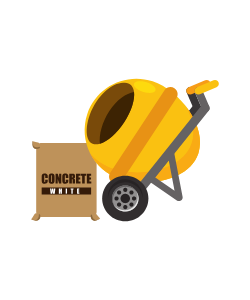2 Tips To Keep In Mind When Buying Ready-Mix Concrete For A DIY Project
If your upcoming do-it-yourself project requires the use of concrete, you can use ready-mix concrete instead of having to pay a contractor to deliver a load of prepared concrete to your property. Here are a couple of tips to follow when buying ready-mix concrete that will help ensure convenience and success for your DIY project:
Find a Dry Place to Store It
If you will not be using your ready-mix concrete as soon as you get it home, it is important to find a dry place to store it until it is ready to be used. If your concrete bags get even a little damp, the concrete powder will harden and become unusable. You may be left with chunks of hardened concrete when you open the bag to use it and end up having to head back to the store to buy more.
The garage, basement, attic, or even under a canopy outside are all decent storage options. If you are unsure whether water will make contact with your concrete bags if it rains, cover the bags with a tarp or piece of painter's plastic. If you have any dry concrete mix left after your project is complete, store it in a 5-gallon paint bucket that has a tight-fitting lid so that it will hold up until you need it again in the future.
Mix Your Concrete Slowly
When it comes time to mix your concrete up for use, it is important to do so slowly. Do not just pour a whole bag of concrete mix into your mixing container and then add a bunch of water. Start with just half the bag of mix, and stir the concrete while pouring about ½ a gallon of water into the mixture at a time. Keep pouring water in and stirring until you create a soupy consistency. Then, start adding a little extra concrete mix at a time until the consistency turns into a thick, peanut-butter-like consistency, which is when it is ready to use.
If you pour too much concrete into the mixing container at once, you may not have enough room to add the necessary amount of water for proper consistency. If you pour too much water in at once, you may end up with a consistency that is too thin to use for your DIY project, and no leftover concrete mix to add to it.
Utilizing these two tips can help to save you some time, trouble, and money overall while working on your upcoming DIY project.

